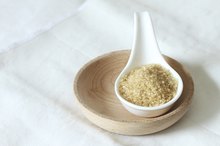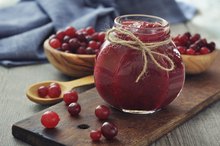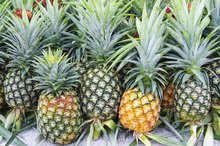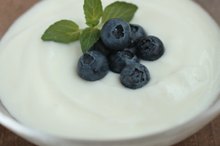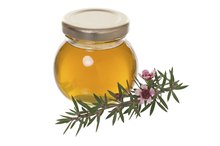Invert Sugar Within A Diabetes-Friendly Diet
Invert sugar is a liquid sugar that contains glucose and fructose. It is used by manufacturers as an added sweetener because it gives a smooth mouth feel to candies and frostings. It also retains moisture content, improves browning and extends shelf life. Glucose and fructose are sugars that are absorbed into the blood stream and raise your blood sugar, or blood glucose, level. If you have diabetes, you can include invert sugar in your diet, but it needs to be counted as part of your recommended carbohydrate intake.
About Invert Sugar
Invert sugar is created when a sugar syrup is combined with a small amount of acid – such as cream of tartar or lemon juice – and heated. In manufacturing, the enzyme invertase may be combined with the simple sugar instead of an acid. This process breaks down the disaccharide sucrose into the monosaccharides glucose and fructose. If you have made jam or jelly with granulated sugar, invert sugar was produced when it combined with acid in the fruit and was heated.
- Invert sugar is created when a sugar syrup is combined with a small amount of acid – such as cream of tartar or lemon juice – and heated.
- In manufacturing, the enzyme invertase may be combined with the simple sugar instead of an acid.
Nutrition Facts
Foods Containing Glucose or Fructose
Learn More
One tablespoon of invert sugar contains 58 calories and 14.6 grams of carbohydrate in the form of sugar. It does not contain any fat, protein, fiber or cholesterol. It is not a significant source of any vitamins or minerals. On ingredient lists it will usually be identified as invert sugar 1. Other names include inversol, nulomoline, trimoline and colorose. The USDA’s 2010 Dietary Guidelines Advisory Committee, DGAC, recommends limiting foods that contain invert sugar, along with other forms of added sugar, because they contribute excess calories but are low in essential nutrients.
- One tablespoon of invert sugar contains 58 calories and 14.6 grams of carbohydrate in the form of sugar.
Food Sources
Invert sugar is present naturally in honey and pure maple syrup 1. It is also used as a sweetener in candies, frosting, beverages, biscuits and baked desserts. The DGAC recommends including these foods only infrequently and in very small portions. Fit them into your daily calorie and carbohydrate intake only after your requirements for essential nutrients have been met. Liquid invert sugar can be ordered online or purchased at cake-decorating supply shops. Like other forms of sugar, invert sugar will raise your blood glucose level 1. Count it into your carbohydrate allotment.
Meal Planning
Sources of Sucrose Sugar
Learn More
If you use liquid invert sugar, count each tablespoon as one carbohydrate choice in your meal plan. For counting carbohydrates, each tablespoon contains 15 grams of carbohydrates. For processed foods that contain added invert sugar, read the nutrition facts panel. Check the recommended serving size and count the total carbohydrates per serving in your carbohydrate allotment for the meal. Every 15 grams of total carbohydrate counts as one serving of a carbohydrate food.
- If you use liquid invert sugar, count each tablespoon as one carbohydrate choice in your meal plan.
Related Articles
References
- Chef Eddy Van Damme; Invert Sugar; November 1, 2009
- Clemens RA, Jones JM, Kern M, et al. Functionality of Sugars in Foods and Health. Comprehensive Reviews in Food Science and Food Safety. 2016;15(3):433-470. doi:10.1111/1541-4337.12194.
- Rippe JM, Angelopoulos TJ. Relationship between Added Sugars Consumption and Chronic Disease Risk Factors: Current Understanding. Nutrients. 2016;8(11):697. Published 2016 Nov 4. doi:10.3390/nu8110697
- Vos MB, Kaar JL, Welsh JA, et al. Added Sugars and Cardiovascular Disease Risk in Children: A Scientific Statement From the American Heart Association. Circulation. 2017;135(19):e1017–e1034. doi:10.1161/CIR.0000000000000439
Writer Bio
Catherine Cox started writing in 1989. She has been published by “Nutrition and the M.D.” and “Consultant” and has written client education materials for health-care organizations. A dietitian and diabetes educator, Cox holds a Master of Public Health in nutrition science from the University of California, Los Angeles.



